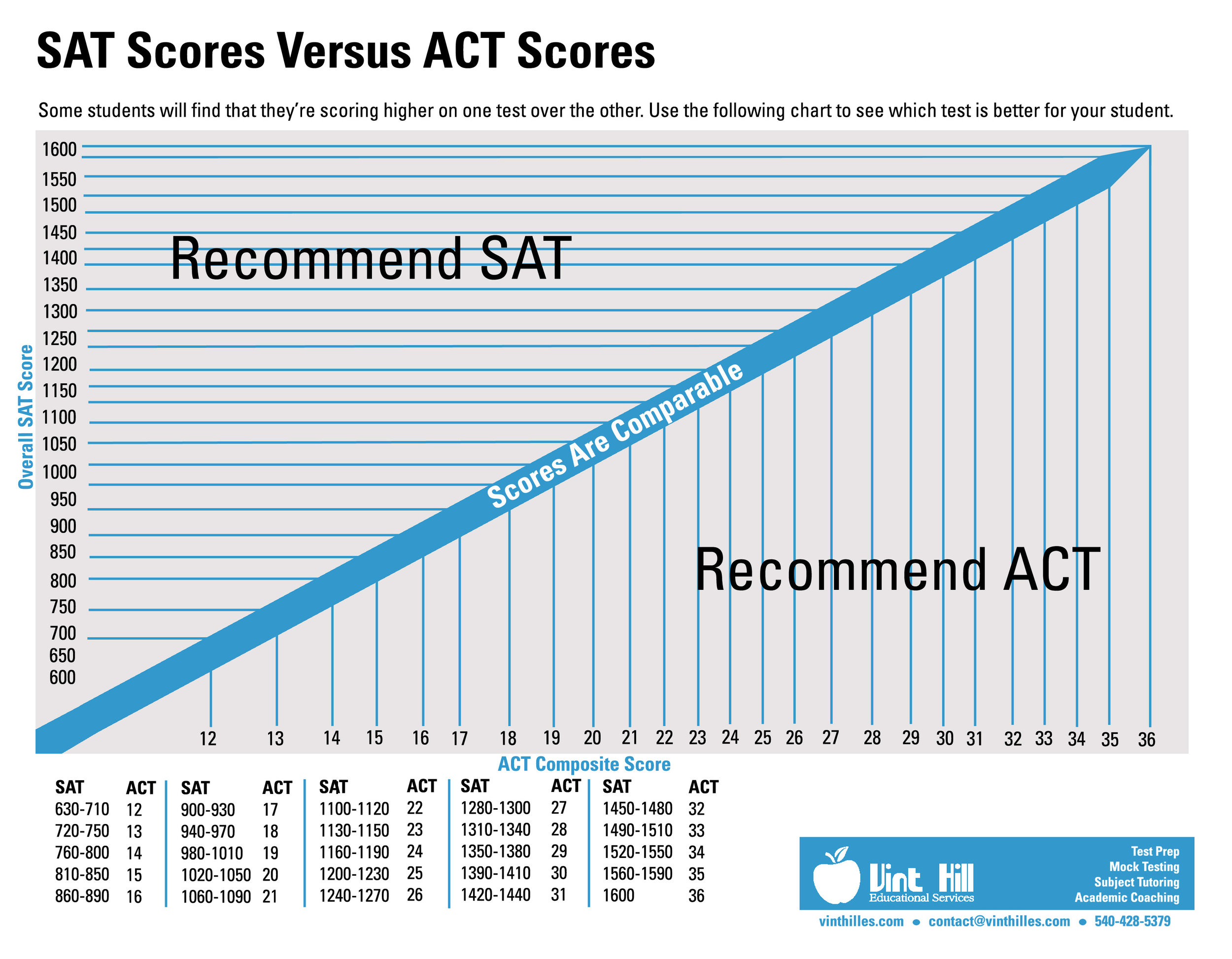Students that take both the SAT and ACT can compare scores to see which test they’re scoring higher on. Some students will find that they’re actually scoring higher on one test over the other. We recommend that students take official SAT and official ACT practice tests. This means, taking a test created by the College Board or the ACT. We offer full-length mock practice tests in a group setting. Students that take both a mock SAT and ACT, with us, will receive an individualized comparison chart. This document accompanies the student’s SAT and ACT baseline reports. We determine which test is better, SAT or ACT, by comparing scores using a concordance table. We also ask the student how he or she felt about the tests: pacing, timing, comfortability, testing format, question types, ACT science versus SAT no-calculator math, essay section, etc.
The ideal time to take full-length practice SAT and ACT tests are fall of junior year. If the family can find time during the summer months, then the summer going into junior year works well too. Juniors usually take their first official test during the winter or spring. Once a test is decided upon, SAT or ACT, a customized test prep plan is put in place, based upon the student’s strengths and weaknesses. If an action plan is put together during the fall of junior year then the student can prep for an official winter or spring test. The amount of prep needed is determined by the difference in the student’s SAT or ACT scores, compared to the interested schools’ middle 50% SAT and ACT scores. In addition, test prep programs need to be catered to the individual and his or her academic background. Is remedial work needed for math or grammar? Does the student receive standardized testing accommodations? Is the student currently enrolled in Algebra II or Trigonometry (taking a spring test might be better)?
By using the chart below, you can decide which test is better for you.
Find out how we can help decide which test to prep for!




